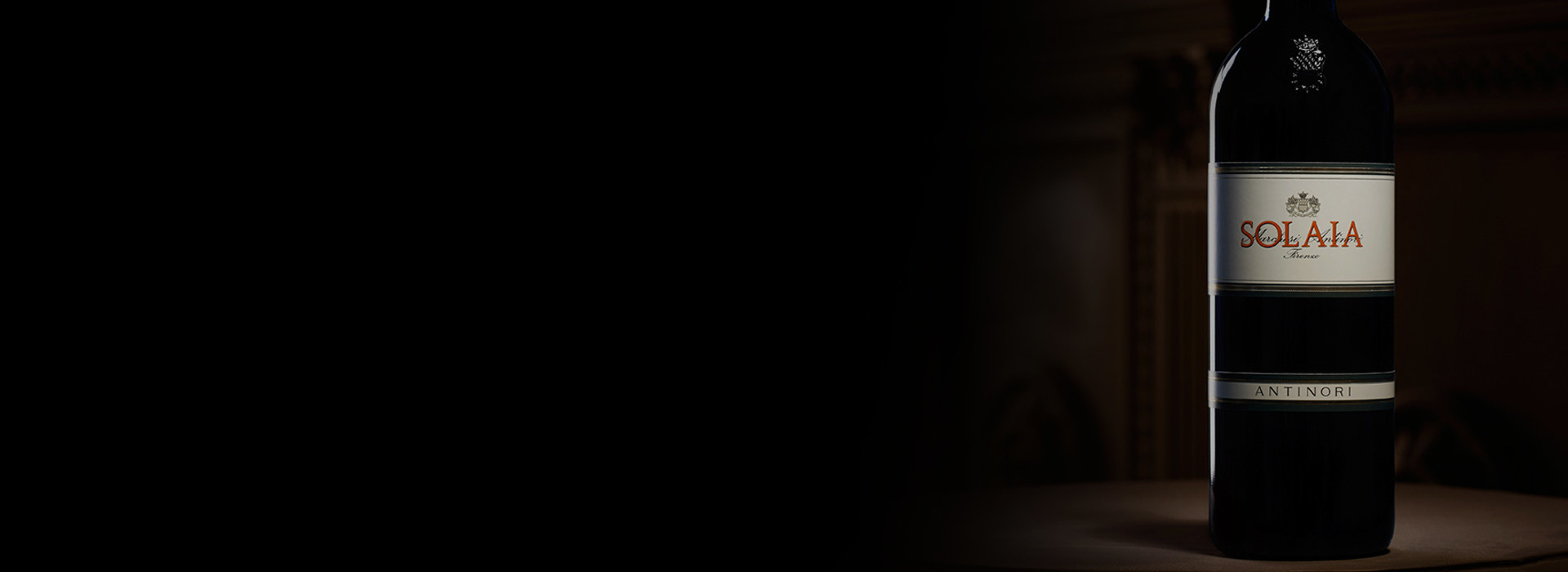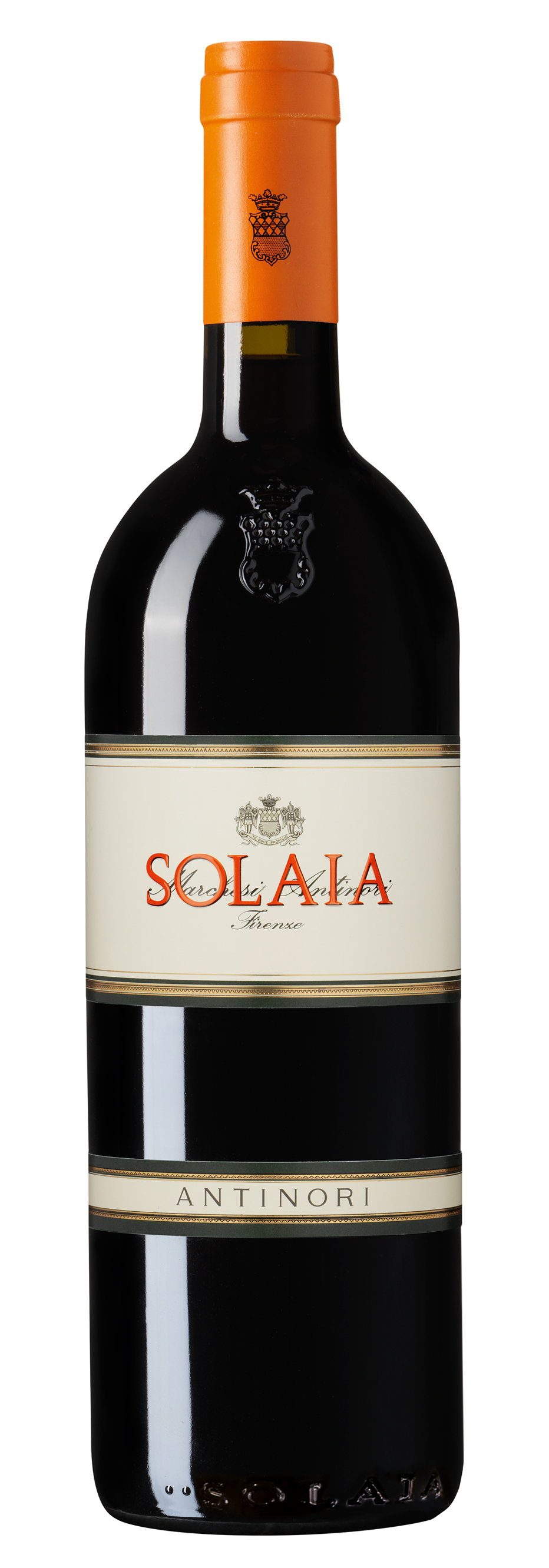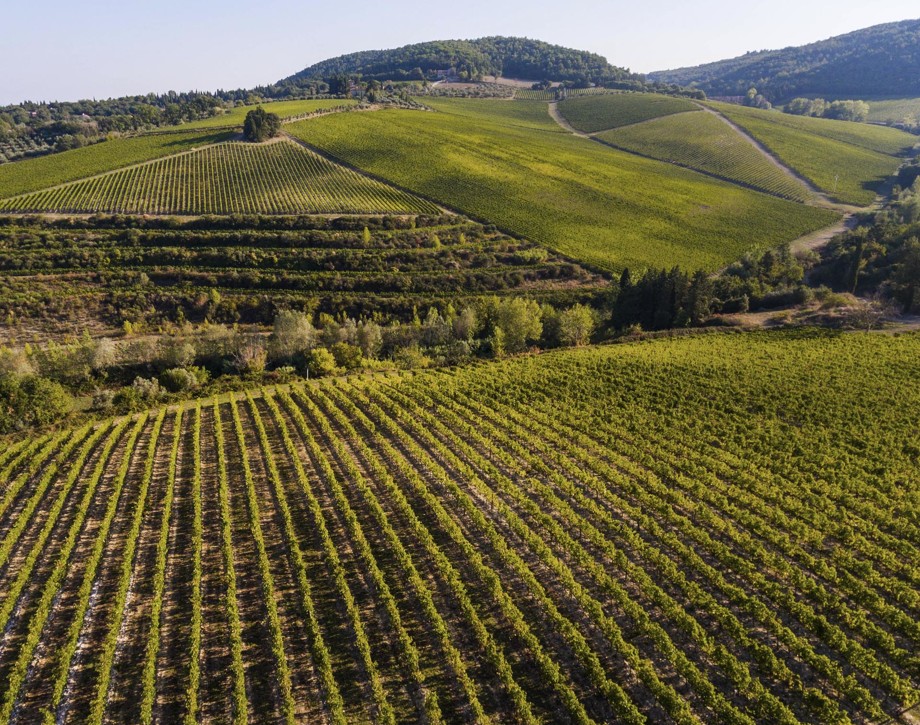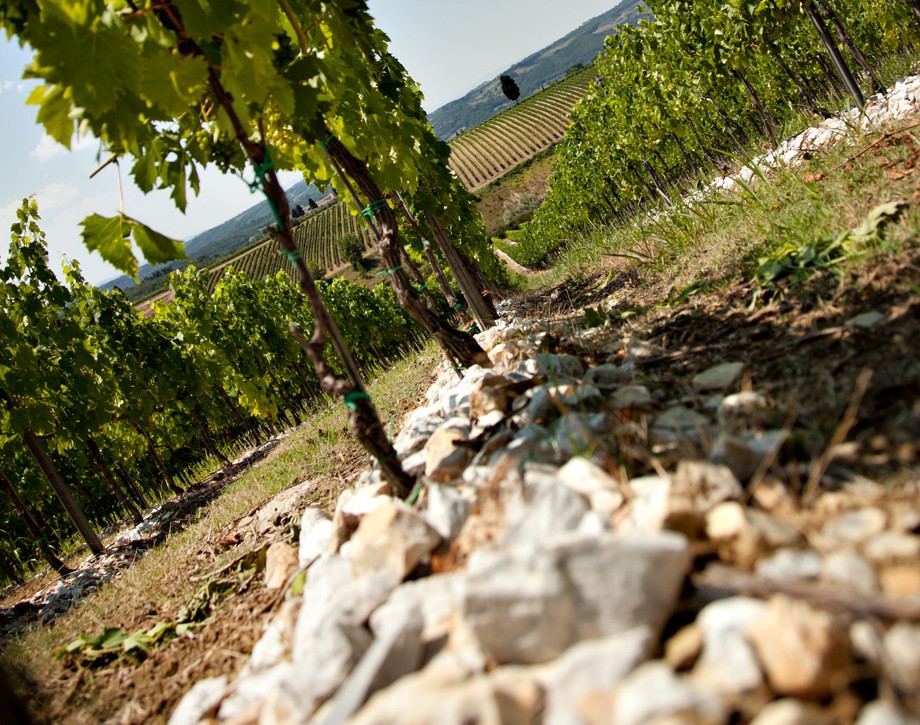Solaia

Climate
After a particularly cold and wet autumn, followed by severe winter temperatures with persistent rain, the vines budded late compared to the average in preceding years. The spring was also wet, but without affecting the regular formation and growth of the bunches. The second half of July saw very high temperatures, but the weather changed again in August, with rain and below average temperatures. Excellent weather conditions in September and October, together with normal day and night temperature differences, allowed the grapes to ripen perfectly and the harvested crop was both abundant and of quality.
Vinification
The weather conditions during the harvest ensured a very high quality crop. Particular attention was paid to grape selection in the vineyard, so that only perfect bunches arrived in the cellar. The harvest was completely by hand, picking by 1-hectare plots, according to the vigor of the vines. The Sangiovese grapes were picked in the first ten days of October, while the Cabernet Franc and Cabernet Sauvignon were harvested in the second half of the month. As always, great attention was paid to the fermenting and extraction processes, using délestage and overpumping to maintain the natural aromas of each grape variety and the intense color. Fermentation of all three grape varieties was carried out at an average of 27° and no higher than 31°, to best preserve the true aromas, flavors and varietal character of the fruit. The musts showed great complexity from the start, together with abundant varietal character, evident in the aromas, elegance and color, the first signs of a potentially great vintage. After alcoholic fermentation, the wines were racked into new oak barrels to undergo malolactic fermentation, which occurred by the end of the year. The wines were then blended and aged in barrel for 12 months, then racked off and, after a careful tasting of each barrel, the wine was bottled. The wine was released after a further year in bottle.
Historical Data
Solaia is a 50 acre (20 hectare) vineyard with a southwestern exposure located at an altitude between 1150 and 1325 feet (350-400 meters) above sea level and with a stony soil of “alberese” (hard limestone) and “galestro” (flaky calcareous clay) rock. The vineyard is located at the Tignanello estate. The Antinori family produced this wine for the first time in the year 1978, and the initial blend was 80% Cabernet Sauvignon, and 20% Cabernet Franc, a formula repeated in 1979 as well. In the following years, 20% of Sangiovese was introduced and certain adjustments were also made in the rapport between Cabernet Sauvignon and Cabernet Franc until the current blend was settled upon. Solaia is produced only in exceptional vintage, and was not produced in 1980, 1981, 1983, 1984, and 1992.
Tasting Notes
Intense ruby red color and immediate classic, fruity aromas that are in perfect harmony with the vanilla and chocolate notes from the oak. Solaia 2006 is powerful on the palate, with a tannic texture, yet remaining smooth, with a very long finish, after time in the glass. Intense aftertaste of ripe blackberry and cherry fruit and a seemingly endless finish.
Awards
A.I.S. "Duemilavini 2010" Guide 5 Grappoli Italy Espresso I Vini D'italia 2009 Premio d'Eccellenza Italy Gambero Rosso "Vini d'Italia 2009" Guide Tre Bicchieri Italy I Vini Di Veronelli 2010 98/100 - Super Tre Stelle Italy Wine Advocate 94/100 USA Wine Enthusiast 95/100 USA Wine Spectator 97/100 USA

The Wine
The sunniest part of the Tignanello's hillside is home to the Solaia vineyard. The very best grapes from the very best vineyard. All the rest is passion, the utmost care and research. These are the secrets of Solaia together with the finest Cabernet Sauvignon, Cabernet Franc and Sangiovese grapes from its namesake vineyard.

Climate
After a particularly cold and wet autumn, followed by severe winter temperatures with persistent rain, the vines budded late compared to the average in preceding years. The spring was also wet, but without affecting the regular formation and growth of the bunches. The second half of July saw very high temperatures, but the weather changed again in August, with rain and below average temperatures. Excellent weather conditions in September and October, together with normal day and night temperature differences, allowed the grapes to ripen perfectly and the harvested crop was both abundant and of quality.
Vinification
The weather conditions during the harvest ensured a very high quality crop. Particular attention was paid to grape selection in the vineyard, so that only perfect bunches arrived in the cellar. The harvest was completely by hand, picking by 1-hectare plots, according to the vigor of the vines. The Sangiovese grapes were picked in the first ten days of October, while the Cabernet Franc and Cabernet Sauvignon were harvested in the second half of the month. As always, great attention was paid to the fermenting and extraction processes, using délestage and overpumping to maintain the natural aromas of each grape variety and the intense color. Fermentation of all three grape varieties was carried out at an average of 27° and no higher than 31°, to best preserve the true aromas, flavors and varietal character of the fruit. The musts showed great complexity from the start, together with abundant varietal character, evident in the aromas, elegance and color, the first signs of a potentially great vintage. After alcoholic fermentation, the wines were racked into new oak barrels to undergo malolactic fermentation, which occurred by the end of the year. The wines were then blended and aged in barrel for 12 months, then racked off and, after a careful tasting of each barrel, the wine was bottled. The wine was released after a further year in bottle.
Historical Data
Solaia is a 50 acre (20 hectare) vineyard with a southwestern exposure located at an altitude between 1150 and 1325 feet (350-400 meters) above sea level and with a stony soil of “alberese” (hard limestone) and “galestro” (flaky calcareous clay) rock. The vineyard is located at the Tignanello estate. The Antinori family produced this wine for the first time in the year 1978, and the initial blend was 80% Cabernet Sauvignon, and 20% Cabernet Franc, a formula repeated in 1979 as well. In the following years, 20% of Sangiovese was introduced and certain adjustments were also made in the rapport between Cabernet Sauvignon and Cabernet Franc until the current blend was settled upon. Solaia is produced only in exceptional vintage, and was not produced in 1980, 1981, 1983, 1984, and 1992.
Tasting Notes
Intense ruby red color and immediate classic, fruity aromas that are in perfect harmony with the vanilla and chocolate notes from the oak. Solaia 2006 is powerful on the palate, with a tannic texture, yet remaining smooth, with a very long finish, after time in the glass. Intense aftertaste of ripe blackberry and cherry fruit and a seemingly endless finish.
Awards
A.I.S. "Duemilavini 2010" Guide 5 Grappoli Italy Espresso I Vini D'italia 2009 Premio d'Eccellenza Italy Gambero Rosso "Vini d'Italia 2009" Guide Tre Bicchieri Italy I Vini Di Veronelli 2010 98/100 - Super Tre Stelle Italy Wine Advocate 94/100 USA Wine Enthusiast 95/100 USA Wine Spectator 97/100 USA

Tenuta Tignanello
The Tenuta Tignanello estate is in the heart of Chianti Classico, in the gently rolling hillsides between the Greve and Pesa river valleys. It extends over an area of 319 hectares (788 acres), of which 130 (321 acres) are dedicated to vines. Two of the estate’s prized vineyards are on the same hillside, Tignanello and Solaia, on soils that originated from marine marlstone from the Pliocene period rich in limestone and schist. The vines enjoy hot temperatures during the day and cooler evenings throughout the growing season. The estate’s two signature wines, Solaia and Tignanello, are produced from these vineyards and have been defined by the international press as “among the most influential wines in the history of Italian viticulture”. According to Marchesi Antinori, Solaia and Tignanello are an ongoing challenge and a never-ending passion. The Tignanello estate has vineyards of indigenous Sangiovese grapes as well as some other untraditional varieties such as Cabernet Franc.

Soil
Soils originating in the Pliocene period, rich in marine fossils with veins of clay. Rich presence of calcareous rocks and marl.
















